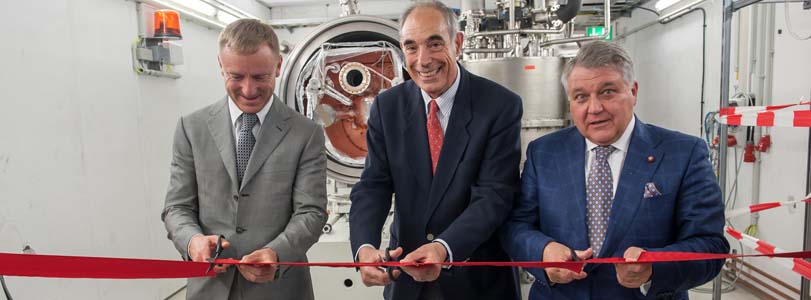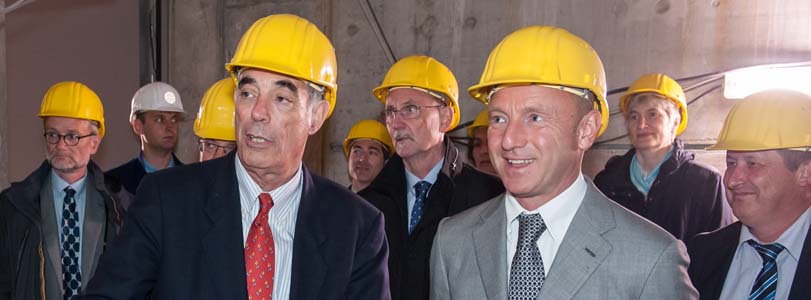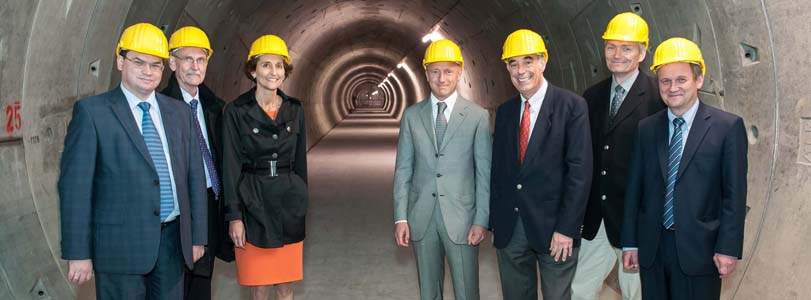Russian Minister Livanov visits European XFEL
On June 28, the Minister of Education and Science of the Russian Federation, Dmitry Livanov, visited European XFEL in Hamburg and the construction site in Schenefeld.
The European XFEL Management Board and the DESY Board of Directors informed the Minister about the progress and the scientific research opportunities at the X-ray free-electron laser. Livanov, who is a physicist, later visited research facilities on the DESY campus and the European XFEL construction site in Schenefeld. Russia is an important shareholder of European XFEL and contributes about 27% of the costs, second only to the host country, Germany, which covers 58%.
“We appreciate the cooperation between Russia and European XFEL in the project, which we hope will be completed according to schedule. And we hope very much that many young Russian scientists will work here when user operation starts”, minister Livanov said in the future European XFEL experiment hall in Schenefeld.
“We are very pleased to have Russia as a reliable and important partner”, said Massimo Altarelli, Chairman of the European XFEL Management Board. “The Russian contribution and commitment is crucial to the successful realization of our new facility. European XFEL, in turn, offers its member countries the tools to push forward the frontiers of key disciplines such as structural biology, materials science or femtochemistry. Scientists will be able to observe fast chemical reactions in a molecular movie, thus fostering technological breakthroughs of industrial importance.”

Like other shareholders, Russia contributes to the construction of the European XFEL not only in cash but also in kind. Russian research institutes produce a number of different components, among them high-tech cryogenic components, thousands of parts for vacuum systems, 840 electromagnets weighing between 25 kg and 6 t each, and three test stands for accelerator modules. On his tour of European XFEL sites, Livanov inspected the control process for the Russian magnets and discussed their application with German and Russian scientists. Livanov also inaugurated the first test stand for the accelerator modules at the newly established European XFEL Accelerator Module Test Facility (AMTF). Finally, the minister visited the construction site in Schenefeld, the tunnels and the experimental hall, where groups of Russian scientists will work side by side with other top international researchers when user operation starts.
Of the 840 magnets delivered by Russia, 715 are produced by the D.V. Efremov Scientific Research Institute of Electrophysical Apparatus (NIIEFA) in St. Petersburg for high-precision focusing of the electron beam in the accelerator. More than 50 magnets have already been delivered. The last are planned to be produced by the end of 2014. The Budker Institute of Nuclear Physics in Novosibirsk has already contributed 125 quadrupole magnets for the electron beam in the photon tunnels, where the X-ray flashes are generated. The Budker Institute also contributes the three test stands for the more than 103 modules of the European XFEL accelerator. The complex cryo modules will be delivered from France and tested in autumn 2013. Each module will be 12 m long and weigh 7.4 t.

